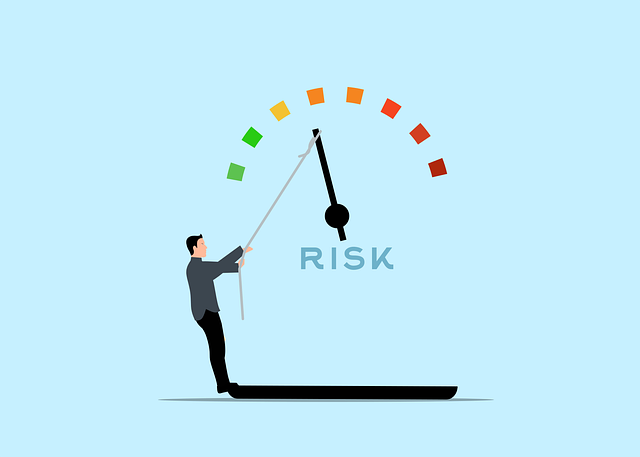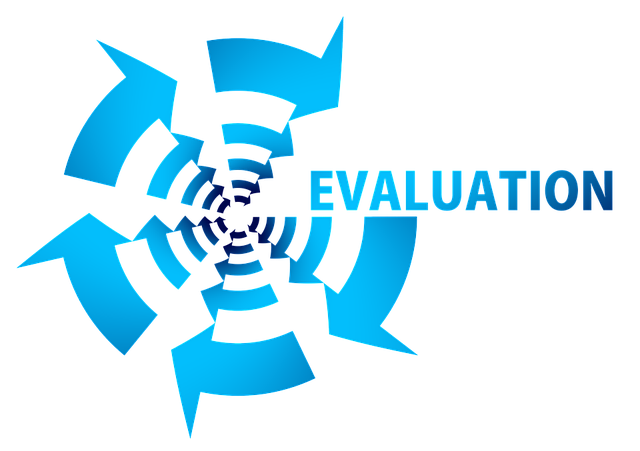Business Continuity Management: Comprehensive Guide to Building Your Business Continuity Plan
Aug 15, 2024
A Business Continuity Plan (BCP) is critical to the organization's overall business continuity management strategy and helps organizations prepare for, respond to, and recover from disruptive incidents. Whether these disruptions are due to natural disasters, cyber attacks, or other unforeseen events, a well-constructed BCP ensures that essential business functions continue with minimal interruption.
Creating a business continuity plan involves more than just drafting a document; it requires a thorough understanding of the business’s critical functions, potential risks, and the resources required to maintain operations under adverse conditions. Each section of the business continuity plan should be appropriately detailed to leave no room for ambiguity during an emergency, but to be accessible enough to understand and utilize during potential incidents.
This guide will walk you through the essential sections of a Business Continuity Plan and the steps in putting one together, offering a detailed blueprint for safeguarding your organization.
Business Continuity Plan & Disaster Recovery Details
A well-defined Business Continuity Plan (BCP) and Disaster Recovery Plan (DRP) serve as the backbone of the organization’s business continuity management and resilience strategy, with business continuity planning being a structured approach to maintain operations during and after disruptive events, and disaster recovery specifying how to return to normal operations.
The business continuity plan outlines the processes and procedures necessary to maintain critical business functions during a disruption. The disaster recovery plan, on the other hand, should include precise instructions for staff to restore systems, data, network infrastructure, and business processes as quickly as possible after an incident. These plans work in tandem to ensure that the organization can not only survive a disruption but also recover quickly and resume normal operations.
Provide a Name and Owner for the Business Continuity Plan
The first step in business continuity planning is to assign a clear name for the plan itself (to easily identify what the plan covers) and designate an owner responsible for the plan. The owner is typically a senior-level executive or manager with the authority to ensure the business continuity plan’s implementation and maintenance. The name should reflect the scope and focus of the plan, making it easily identifiable within the organization.
The owner, often a Chief Risk Officer (CRO) or a similar high-ranking official, plays a crucial role in the plan’s success. This individual is responsible for not only overseeing the development of the business continuity program but also ensuring that it is regularly updated, tested, and understood by all stakeholders. The owner must also be prepared to act as the plan’s champion within the organization, securing the necessary resources and support from senior management.
It's important to note, that the owner can maintain ownership of multiple business continuity plans and disaster recovery plan, and may even delegate responsibility for the plan and operational continuity management to other parties, but (the owner) will always maintain ultimate responsibility (and liability) for the business continuity plans and disaster recovery plans where they are the named owner.
Identify the Initiation Criteria
Initiation criteria are the specific conditions or events that trigger the activation of the business continuity plan. These could include natural disasters, system failures resulting in data loss, security breaches, or any other incident that doesn't let the organization maintain normal operations. Clearly defining these criteria helps the company ensure timely and appropriate responses to potential threats.
In defining initiation criteria, organizations must consider the full range of potential threats. This involves conducting a thorough risk assessment as part of their business continuity strategy to identify scenarios that could cause significant operational disruptions. For each scenario, specific triggers should be defined. For example, a cyberattack that compromises sensitive data might trigger the plan’s activation if the breach exceeds a certain threshold of affected records. Similarly, a natural disaster, such as a hurricane, might activate the plan when forecasts predict a direct impact on the organization’s facilities. By clearly outlining these triggers, the organization ensures that the business continuity plans are activated only when necessary, avoiding both overreaction and under-reaction to potential threats.
Identify the Resolution Criteria
Resolution criteria outline the conditions under which normal business operations can resume. This section should detail the key metrics or milestones that indicate the organization has effectively managed the disruption and can transition back to standard operations.
Establishing clear resolution criteria is just as important as defining the initiation criteria. These criteria should be based on measurable indicators that reflect the restoration of critical systems, processes, and services. For instance, resolution might be determined by the restoration of network connectivity, the resumption of normal communication channels, or the recovery of critical data. Additionally, resolution criteria should consider the psychological and emotional readiness of employees to return to their regular duties, ensuring that the transition back to normal operations is smooth and sustainable.
Business Continuity Plan & Disaster Recovery Contacts

Effective business continuity management often require collaboration with multiple internal and external parties. By clearly defining these roles, organizations can ensure that all parties involved understand their obligations, reducing confusion and delays during a crisis. The business continuity planning process should cover all aspects of the continuity and recovery process, from initial response through to the resolution and post-incident analysis with appropriate contacts named for each.
Initiating Party
The initiating party is responsible for activating the business continuity plan when the initiation criteria are met. This party must have the authority to make decisions under pressure and should be trained in the procedures outlined in the plan.
The initiating party typically consists of a designated incident response team or a senior management group with the authority to make quick, decisive actions in the face of a crisis. This group is trained to assess situations rapidly, determine whether the initiation criteria have been met, and activate the business continuity plan accordingly. Effective business continuity requires the initiating party's ability to act without hesitation, ensuring that the organization's response is both timely and appropriate. Training and regular drills are essential to prepare the initiating party for the high-pressure situations they may face.
Managing Party
The managing party oversees the execution of the business continuity plan, coordinating efforts across various departments and ensuring that all necessary actions are taken to mitigate the impact of the disruption.
Once the business continuity plan is activated, the managing party steps in to coordinate the response. This group or individual must possess a deep understanding of the organization’s operations and the specific threats being addressed. Their role involves directing resources, communicating with stakeholders, and ensuring that all aspects of the plan are being followed. The managing party must also be prepared to adapt the plan as the situation evolves, making real-time decisions to protect the organization’s interests. Effective management requires not only strong leadership skills but also the ability to remain calm and focused under pressure.
Resolution Party
The resolution party is tasked with ensuring that the resolution criteria are met and that the organization can return to normal operations. This may involve close collaboration with the managing party and other stakeholders.
As the company moves towards resolution, the resolution party plays a crucial role in ensuring that all necessary steps are completed to fully restore operations. This group must verify that the resolution criteria are met, such as system restorations, data recovery, and the stabilization of business functions. Additionally, the resolution party is responsible for conducting a post-incident review, documenting what worked well and identifying areas for improvement. This review is essential for refining the business continuity plan and ensuring that the organization is better prepared for future disruptions.
Business Continuity Plan – Business Impact Analysis

A Business Impact Analysis (BIA) is a critical component of business continuity planning (which is also sometimes referred to as the analysis phase) and risk management in general. It provides a detailed assessment of how potential disruptions could affect the organization’s operations, finances, reputation, and legal standing. Typically performed using a top down approach, the business impact analysis helps prioritize which business functions and business processes are most critical and must be restored first in the event of a disruption. By understanding these impacts, the organization can allocate resources more effectively, ensuring that the most vital areas are protected.
Business Impact Description
This process involves identifying and evaluating the potential impact of various types of disruptions on critical business functions. This includes not only obvious threats like natural disasters and cyberattacks but also more subtle risks such as supply chain interruptions or significant staff absenteeism. Each risk category—Confidentiality, Integrity, Availability, Privacy, and Safety—must be thoroughly examined to understand the full scope of potential impacts.
For example, a disruption that affects data confidentiality could have severe legal and financial implications if sensitive customer information is exposed. Similarly, an incident that compromises the integrity of data could result in costly errors or loss of trust from customers.
By systematically analyzing these impacts, the business impact analysis helps prioritize the organization’s continuity efforts, ensuring that the most critical areas receive the necessary attention and resources.
Business Mission, Objectives, & Obligations
Understanding the organization’s mission, objectives, and obligations is crucial for prioritizing business continuity planning efforts. The business impact analysis should consider how disruptions could affect the financial health, reputation, legal obligations, and regulatory compliance of the business.
At the heart business continuity plans is the need to protect the organization’s wellbeing. This involves not only safeguarding financial performance but also maintaining the organization’s reputation and ensuring compliance with legal and regulatory obligations. Disruptions can have far-reaching consequences that extend beyond immediate operational impacts. For instance, a failure to fulfill contractual obligations due to a disruption could result in legal penalties or the loss of valuable customers. Similarly, a breach of regulatory compliance could lead to fines, sanctions, or even the revocation of licenses.
The business impact analysis should assess how each potential disruption could impact these key areas, allowing the organization to prioritize its continuity efforts accordingly. By aligning the business continuity planning process with the organization’s mission and objectives, the plan becomes a powerful tool for preserving the long-term viability and success of the business.
Likelihood of Occurrence
Estimate the probability of various risks materializing. This helps prioritize resources and efforts towards the most likely and impactful threats.
In addition to assessing the potential impacts of disruptions, the business impact analysis must also consider the likelihood of these risks materializing. This involves a careful analysis of historical data, industry trends, and emerging threats to estimate the probability of various incidents occurring. By understanding the likelihood of different scenarios, the organization can prioritize its resources and efforts towards the most probable and impactful threats. For example, if the organization operates in a region prone to hurricanes, the business impact analysis might prioritize continuity planning for severe weather events over less likely scenarios like industrial espionage. By focusing on the most likely risks, the organization can ensure that business continuity planning process is both effective and efficient, providing the best possible protection for its critical functions.
Business Continuity Plan Description
This section of the business continuity planning process provides a detailed outline of the specific business continuity activities the entire organization will take in response to each identified impact. The business continuity plan outlines essential procedures and instructions that organizations must follow when a disaster occurs that causes a disruption, emphasizing the importance of having a strategic playbook to minimize downtime amidst any type of business disruption.
The business continuity plan should be comprehensive, covering every aspect of the organization’s operations, from IT systems and data to human resources and supply chains. This might include developing alternative communication channels if the primary system goes down, establishing backup supply chains in case of a supplier failure, creating remote work protocols in response to a pandemic, identifying a disaster recovery site or hot site, or specifying how to restore data after a data loss. Each action should be clearly defined (with assigned responsibilities, timelines, and resources), and tailored to the specific needs and vulnerabilities of the organization, ensuring that the plan is both relevant and practical.
By providing detailed guidance, the business continuity plan ensures that everyone in the organization knows what to do in the event of a disruption, minimizing confusion and delays.
Business Continuity Efforts Impact Analysis
While the primary goal of a business continuity plan is to mitigate the impact of disruptions, it’s also important to consider how these continuity efforts might introduce new risks. For example, moving to a remote work model during a crisis could create new challenges related to data security and employee privacy. Similarly, relying on backup suppliers might expose the organization to risks associated with supply chain disruptions in different regions. To address these potential issues, the business continuity plan should include a detailed impact analysis of the continuity efforts themselves. This analysis should evaluate each risk category—Confidentiality, Integrity, Availability, Privacy, and Safety—to identify any new vulnerabilities that might arise. By anticipating these risks, the organization can take proactive steps to mitigate them, ensuring that the continuity efforts do not inadvertently create new problems.
In addition to evaluating the potential risks of continuity efforts, the business continuity plan should also ensure that these efforts align with the organization’s broader mission and objectives. This involves considering how the continuity efforts might impact the organization’s financial performance, reputation, and legal obligations. For example, if the continuity plan involves cutting costs by reducing staff, this could have long-term implications for employee morale and productivity. Similarly, if the plan involves outsourcing critical functions to third-party vendors, the organization must ensure that these vendors comply with all relevant legal and regulatory requirements. By aligning the continuity efforts with the organization’s mission and objectives, the business continuity planning process helps protect the long-term health and success of the business, even in the face of disruption.
Continuity & Recovery Considerations & Required Resources

One of the most critical aspects of a business continuity plan is the identification of the resources and capital needed to execute the plan effectively. Without the necessary resources—whether they be financial, technological, or human—the best-laid plans may fail when they are most needed. This section of the business continuity planning process should provide a comprehensive inventory of all required resources, including pre-authorizations for expenditures and decisions that may need to be made quickly during a crisis. By ensuring that these resources are readily available, the organization can act swiftly and decisively, minimizing the impact of the disruption.
Identify Relevant Resources and Capital
Successful execution of a business continuity plan requires the availability of necessary resources and capital. This section should detail the financial and operational resources needed, including pre-authorizations from management for expenses and decisions that can be made without additional approval.
When preparing the BCP, it’s essential to consider all of the resources that will be required to maintain critical operations during a disruption. This might include backup power generators, communication equipment, or additional staff to cover key roles. The plan should also identify any capital expenditures that may be necessary, such as purchasing emergency supplies or securing temporary office space. In many cases, pre-authorizations from management will be necessary to ensure that these resources can be deployed quickly and without bureaucratic delays. By identifying these resources in advance, the organization can avoid costly delays and ensure a more effective response to the disruption.
Continuity & Recovery Considerations
Consider what systems can be taken offline without verification from management, and outline the procedures for reallocating resources during a disruption.
In addition to identifying the necessary resources, the business continuity plan should also consider how these resources will be allocated during a disruption. This might involve prioritizing certain systems or functions over others, depending on the severity of the disruption and the organization’s overall goals. For example, in a severe weather event, the organization might decide to shut down non-essential systems to conserve resources and focus on maintaining critical operations. Similarly, if key personnel are unavailable, the organization may need to reallocate resources to ensure that essential roles are covered. The business continuity plan should provide clear guidelines for making these decisions, including any pre-authorizations that may be necessary. By planning for these contingencies in advance, the organization can respond more effectively to the disruption and ensure that its most critical operations are protected.
Business Continuity Plan & Disaster Recovery Supporting Contacts
Having a reliable network of contacts is vital for executing the business continuity plan effectively. These contacts may include internal stakeholders, such as department heads and IT staff, as well as external parties, such as vendors, service providers, and emergency responders. This section of the business continuity plan should provide a comprehensive list of all relevant contacts, along with their roles and responsibilities during a disruption. By ensuring that these contacts are readily available, the organization can coordinate its response more effectively and minimize the impact of the disruption.
Identify Specific Contacts
Having a reliable network of contacts is vital for executing the business continuity plan effectively. This section should list all relevant contacts, including those for internet and communications services, utilities, landlords, and security.
-
Internet & Communications Contacts: Ensure you have direct lines to your service providers.
-
Utilities Contacts: Maintain updated information for electricity, water, and other essential services.
-
Landlord: Establish a clear line of communication with property managers for access and security.
-
Security Contacts: Include contacts for any security services that may be required during a disruption.
Business Continuity Plan Timeframe

A key consideration in any business continuity plan is the timeframe for which the organization can operate under continuity efforts. This section of the business continuity plan should identify how long the business can continue to function under these efforts and what the plan is when that time approaches or is exceeded. By establishing clear timeframes, the organization can plan for both short-term disruptions and longer-term recovery efforts, ensuring that it remains operational even in the face of significant challenges.
Operational Timeframe Under Continuity Efforts
The business continuity plan should clearly define the maximum timeframe for which the organization can operate under continuity efforts before normal operations must be restored. This might involve identifying the maximum duration that critical systems can run on backup power, the length of time that key personnel can work remotely, or the period during which alternative supply chains can be relied upon. If the disruption extends beyond this timeframe, the organization must have contingency plans in place to ensure its continued operation. These plans might include transitioning to new suppliers, relocating to alternative facilities, or bringing in additional resources to support extended operations. By planning for these contingencies, the organization can ensure that it remains resilient in the face of prolonged disruptions and can continue to meet its obligations to customers, employees, and other stakeholders.
Disaster Recovery Plans Specifics
The disaster recovery plan (DRP) is a critical component of the business continuity plan, detailing the steps to transition from continuity operations back to normal. This section of the plan should provide a detailed roadmap for recovering from a disruption, including the specific actions that need to be taken to restore systems, data, and operations. By providing clear, actionable guidance, the disaster recovery plan ensures that the organization can recover quickly and efficiently, minimizing the impact of the disruption and returning to normal operations as soon as possible.
Business Continuity Plan Review & Testing Requirements

A business continuity plan is only as good as its ability to perform during an actual disruption. Regular reviews and testing are essential parts of the business continuity planning process to ensure that the plan remains effective and relevant in the face of changing risks and business environments. This section of the business continuity planning process should outline the organization’s testing procedures requirements, including the frequency of these activities, the methods to be used, and the individuals or teams responsible for carrying them out.
Business Continuity Plan Review Requirements
Regular reviews are essential for keeping the business continuity plan relevant and effective. This section should specify the frequency of reviews—whether annually, semi-annually, or at another interval—and outline the process for updating the plan.
The business continuity plan should be reviewed regularly to ensure that it remains effective in the face of changing risks and business environments. This might involve an annual review to assess whether the plan is still aligned with the organization’s mission and objectives or a more frequent review in response to specific changes in the business or regulatory environment. Review processes should involve a thorough assessment of all aspects of the plan, including the identification of any new risks, the evaluation of the effectiveness of existing controls, and the update of contact lists and resource inventories. By conducting regular reviews, the organization can ensure that its business continuity plan remains up-to-date and capable of addressing the full range of potential disruptions in the event of a disaster.
Business Continuity Plan Testing Requirements
In addition to regular reviews, the business continuity plan should also be tested periodically to ensure that it will perform as expected during an actual disruption. This might involve conducting a tabletop exercise to simulate a specific disruption, a walkthrough to test the plan’s procedures in a controlled environment, or a full-scale interruption to assess the organization’s ability to operate under continuity efforts. The testing methodology should be carefully chosen to reflect the organization’s specific risks and operational requirements, with each test designed to challenge the plan and identify any weaknesses or gaps. The results of these tests should be documented and used to update the plan, ensuring that the organization is fully prepared for any potential disruption.
Business Continuity Plan Testing Methodology
Outline the specific methods used to test the business continuity plan, including the scenarios that will be simulated and the criteria for evaluating the effectiveness of the plan.
The business continuity plan should include a detailed methodology for testing the plan, including the specific scenarios that will be simulated and the criteria for evaluating the effectiveness of the plan. This might involve testing the organization’s ability to respond to a cyberattack, a natural disaster, or a supply chain disruption, with each test designed to assess different aspects of the plan. The testing methodology should also consider the organization’s specific risks and operational requirements, with each test designed to challenge the plan and identify any weaknesses or gaps. By conducting regular tests, the organization can ensure that its business continuity plan remains effective and relevant in the face of changing risks and business environments.
Testing Requirements & Responsibilities
Finally, the business continuity plan should clearly assign responsibility for testing to specific individuals or teams, ensuring that all participants are fully trained and aware of their roles. This might involve designating a specific team to conduct the tests, with each member assigned a specific role in the testing process. The testing team should be fully trained in the plan’s procedures and the specific scenarios that will be simulated, with each member responsible for carrying out their assigned tasks. By assigning clear responsibilities and providing appropriate training, and adhering to standards and good practices developed by organizations such as the Federal Emergency Management Agency (FEMA), the organization can ensure that its business continuity plan is tested effectively and that all participants are fully prepared for an actual disruption.
Conclusion

A robust business continuity plan is an essential tool for ensuring that your organization can withstand and recover from unexpected disruptions. By following the steps outlined in this guide, you can create a comprehensive business continuity plan that addresses every aspect of your business operations, safeguarding your organization’s future. Regular reviews and testing will ensure that the plan remains effective and relevant in the face of changing risks and business environments, providing the confidence that your organization is fully prepared for any potential disruption.
STAY INFORMED
Subscribe now to receive the latest expert insights on cybersecurity, compliance, and business management delivered straight to your inbox.
We hate SPAM. We will never sell your information, for any reason.


